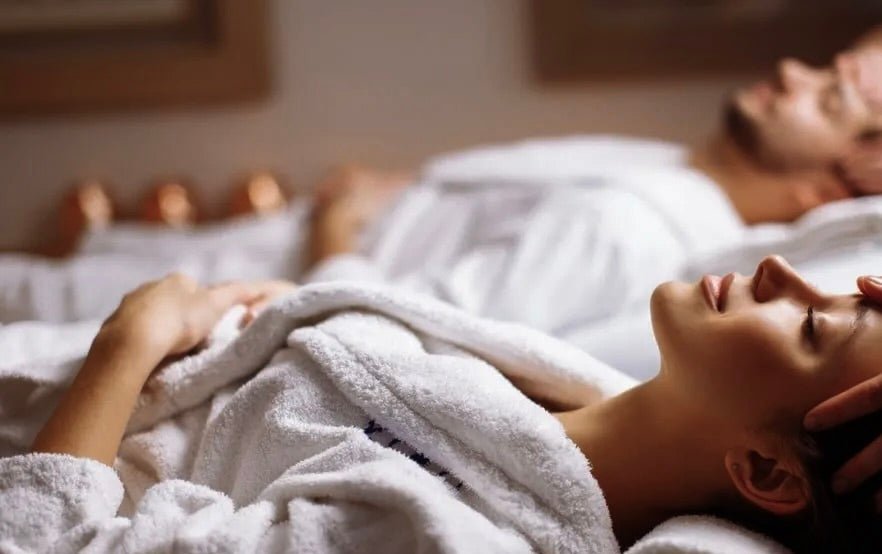
Are Extractions Beneficial for Your Skin? Understanding the Process
What are Skin Extractions?
Skin extractions are a common procedure in many facial treatments. They involve the removal of impurities from the skin, such as blackheads and whiteheads. This is typically done using a special tool or with the fingers wrapped in gauze.
Extractions can be performed by a licensed esthetician or dermatologist during a facial treatment. They can also be done at home, although this is generally not recommended due to the risk of scarring or infection.
The Science Behind Skin Extractions
Our skin naturally produces oil, or sebum, to keep itself moisturized and healthy. However, when this oil mixes with dead skin cells and bacteria, it can clog the pores, leading to the formation of blackheads and whiteheads.
During an extraction, the professional applies pressure around the clogged pore to push out the sebum and dead skin cells. This not only clears the pore but also makes it less likely for the pore to become clogged again in the future.
Benefits of Skin Extractions
When performed correctly, skin extractions can offer several benefits for your skin. These include:
- Clearer Skin: By removing the buildup of sebum and dead skin cells, extractions can help to clear your skin and prevent future breakouts.
- Improved Skin Texture: Extractions can also improve the texture of your skin, making it feel smoother and softer to the touch.
- Better Absorption of Skincare Products: With the pores cleared, your skincare products can penetrate deeper into the skin, making them more effective.
However, it's important to note that while extractions can be beneficial, they are not a cure-all solution for skin problems. They should be used in conjunction with a regular skincare routine that includes cleansing, toning, and moisturizing.
The Extraction Process
Understanding the extraction process can help you know what to expect during a facial treatment. Here is a step-by-step guide:
- Preparation: The skin is first cleansed and steamed to open up the pores and make the extraction process easier.
- Extraction: The professional then uses a tool or their fingers to apply pressure around the clogged pore and push out the impurities.
- Cleansing: After the extraction, the skin is cleansed again to remove any remaining impurities.
- Soothing: A soothing mask or serum is applied to calm the skin and reduce any redness or inflammation.
While the process can be slightly uncomfortable, it should not be painful. If you experience any pain during the extraction, it's important to let your professional know immediately.
Are There Any Risks Involved?
While skin extractions can offer several benefits, they also come with some potential risks. These include:
- Scarring: If not done correctly, extractions can lead to scarring or post-inflammatory hyperpigmentation.
- Infection: There is also a risk of infection if the extraction is not done in a clean environment or if the skin is not properly cared for afterward.
- Increased Sensitivity: Some people may experience increased skin sensitivity or redness after an extraction.
To minimize these risks, it's important to have your extractions done by a licensed professional and to follow their aftercare instructions carefully.
Natural and Sustainable Skin Care Post-Extraction
After an extraction, your skin may be more sensitive and prone to irritation. This is where natural and sustainable skincare ingredients can play a key role. They are gentle on the skin, less likely to cause irritation, and are better for the environment.
Here are some natural ingredients to look for in your post-extraction skincare products:
- Aloe Vera: Known for its soothing properties, aloe vera can help to calm the skin and reduce redness after an extraction.
- Green Tea: Rich in antioxidants, green tea can help to protect the skin from environmental damage and promote healing.
- Chamomile: Chamomile has anti-inflammatory properties that can help to reduce any inflammation or swelling after an extraction.
Remember, everyone's skin is unique, and what works for one person may not work for another. It's always a good idea to patch test new products and to consult with a skincare professional if you have any concerns.
Conclusion
In conclusion, skin extractions can be a beneficial part of your skincare routine, helping to clear your skin and improve its texture. However, they should be done by a professional to minimize the risk of scarring or infection. After an extraction, it's important to take care of your skin with natural and sustainable skincare products to promote healing and prevent irritation.
Remember, healthy skin is not just about extractions or treatments, but about maintaining a regular skincare routine and making healthy lifestyle choices. So, take care of your skin, and it will surely thank you!
















